 W
WA dam failure or dam burst is a catastrophic type of failure characterized by the sudden, rapid, and uncontrolled release of impounded water or the likelihood of such an uncontrolled release. Between the years 2000 and 2009 more than 200 notable dam failures happened worldwide.
 W
WThe Valparaíso earthquake of 1965 struck near the city of La Ligua in the Valparaíso Region, Chile, about 140 km from the capital Santiago on Sunday, March 28 at 12:33 p.m. (UTC-3). The Mw 7.4-7.6 temblor killed an approximate 400 people and caused damages amounting to some US$1 billion. Many of the deaths were from El Cobre, a mining location that was wiped out after a series of dam failures caused by the earthquake spilled mineral waste onto the area, burying many people. Death toll from the earthquake is comparable to the magnitude 8.8, 2010 Maule earthquake.
 W
WThe 1975 Banqiao Dam failure was the collapse of 62 dams, including the Banqiao Dam, in Henan, China in August 1975 under the influence of Typhoon Nina. The dam failure created the third-deadliest flood in history which affected a total population of 10.15 million and inundated around 30 cities and counties of 12,000 square kilometers, with an estimated death toll ranging from 85,600 to 240,000. The flood also caused the collapse of 6.8 million houses. The dam failure took place during the Cultural Revolution when most people were busy with the "revolution"; the Chinese Communist Party (CCP) as well as the Chinese government subsequently hid the details of the disaster until the 1990s, when The Great Floods in China's History (中国历史大洪水), a book prefaced by Qian Zhengying who served as the Minister of Water Resources of China in the 1970s and 1980s, revealed details of the event to the public for the first time.
 W
WThe Machchhu dam failure or Morbi disaster was a dam-related flood disaster which occurred on 11 August 1979, in India. The Machchu-2 dam, situated on the Machchhu river, burst, sending a wall of water through the town of Morbi of Gujarat, India. Estimates of the number of people killed vary greatly ranging from 1800 to 25000 people.
 W
WCoedty Reservoir is a reservoir in Snowdonia, North Wales. It is fed by the waters of Afon Porth-llwyd which flows from Llyn Eigiau. The reservoir lies at a height of 900 feet (274 m), and measures some 12 acres (49,000 m2) in size. It contains brown trout.
 W
WDale Dike Reservoir or Dale Dyke Reservoir is a reservoir in the north-east Peak District, in the City of Sheffield, South Yorkshire, England, a mile (1.6 km) west of Bradfield and eight miles (13 km) from the centre of Sheffield, on the Dale Dike, a tributary of the River Loxley.
 W
WDöda fallet is a former whitewater rapid in of the river Indalsälven in Ragunda Municipality in the eastern part of the province of Jämtland in Sweden. Glacial debris had blocked the course of the Indalsälven at Döda fallet for thousands of years, creating a reservoir of glacial meltwater 25 km (16 mi) long known as Ragundasjön, which overflowed over a natural spillway that bypassed this dam of debris, in a long high steep rapid known as Gedungsen or Storforsen. It was one of the most impressive rapids in Sweden with a total fall height of about 35 meters (115 feet) and a large water discharge.
 W
WThe Edersee Dam is a hydroelectric dam spanning the Eder river in northern Hesse, Germany. Constructed between 1908 and 1914, it lies near the small town of Waldeck at the northern edge of the Kellerwald. Breached by Allied bombs during World War II, it was rebuilt during the war, and today generates hydroelectric power and regulates water levels for shipping on the Weser river.
 W
WThe Fujinuma Dam , was an earth-fill embankment dam in Sukagawa City, Fukushima Prefecture, Japan. It was established on the Ebana River, a tributary of the Abukuma River, 16 km (10 mi) west of the city office of Sukagawa City. Construction on the dam commenced in 1937 and it was completed in 1949 after construction was halted due to World War II. The dam's primary purpose was irrigation. It failed on 11 March 2011 after the 2011 Tōhoku earthquake.
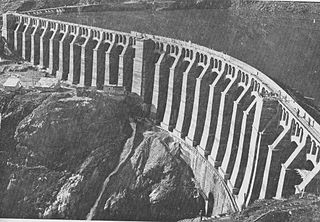 W
WThe Gleno Dam was a multiple arch buttress dam on the Gleno Creek in the Valle di Scalve, northern Province of Bergamo, Italy. The dam was built between 1916 and 1923 with the purpose of producing hydroelectric power. The middle section of the dam collapsed on 1 December 1923, forty days after the reservoir was filled, causing widespread flooding that killed at least 356 people.
 W
WThe 'Durmi Lake dam-burst' was a flood in Garhwal Region of India in 1894 caused by a landslide induced temporary lake. People often used to call it Birahi Tal but it has nothing to do with the name Birahi or Gohna as the lake was formed at Durmi Village thus the real name of lake was Durmi lake as mentioned by HG Walton in his book British Garhwal Gazetteer in 1910.
 W
WThe Great Sheffield Flood was a flood that devastated parts of Sheffield, England, on 11 March 1864, when the Dale Dyke Dam broke as its reservoir was being filled for the first time. At least 240 people died and more than 600 houses were damaged or destroyed by the flood. The immediate cause was a crack in the embankment, the cause of which was never determined. The dam's failure led to reforms in engineering practice, setting standards on specifics that needed to be met when constructing such large-scale structures. The dam was rebuilt in 1875.
 W
WThe Gusau Dam holds a reservoir on the Sokoto River just upstream from Gusau, capital of Zamfara State in Nigeria. It supplies water to the city and neighboring communities. In 2006, the dam collapsed, killing 40 people and destroying 500 homes.
 W
WThe Kantale Dam Tamil: கந்தளாய் அணை, romanized: Kantaḷāy Aṇai) is a large embankment dam built in Kantale, Trincomalee District, Sri Lanka, used for irrigation. It is 14,000 ft (4,267 m) long, and over 50 ft (15 m) high. The dam breached on April 20, 1986, killing more than 120 people. It has since been reconstructed. The dam impounds the Per Aru, a small river discharging into the Koddiyar Bay, at Trincomalee Harbour.
 W
WThe Köprü Dam is a gravity dam on the Göksu, the main tributary of the Seyhan River about 25 km (16 mi) northwest of Kozan in Adana Province, Turkey. Its primary purpose is hydroelectric power generation. Construction began in 2009 and was complete in 2012. On 24 February 2012, the dam's diversion tunnel seal broke while the dam was impounding the river for the first time. This resulted in 97,000,000 m3 (78,639 acre⋅ft) of water flooding the downstream area of the dam. The accident and subsequent flood killed 10 workers. Downstream communities received proper warning and no one was killed.
 W
WThe Koshi Barrage is a sluice across the Koshi river that carries vehicular, bicycle, and pedestrian traffic between Saptari district and Sunsari district of Nepal. It is near the international border with India. It was built between 1958 and 1962 and has 56 gates. It was constructed after the Koshi Agreement was signed between the Government of Nepal and India on April 25, 1954. The barrage was designed and built by Joseph and Company Limited, India. The Koshi Tappu Wildlife Reserve is roughly 3–4 miles north of the barrage.
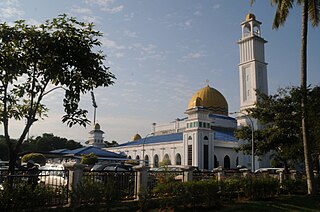 W
WKuala Kubu Bharu, is the district capital of Hulu Selangor District, Selangor, Malaysia. It was built after the town of Kuala Kubu was found to be unfit to continue as a town due to its severe flood problem, particularly when it was completely destroyed in a flood disaster in 1883. Kuala Kubu Bharu is located on the foothill of the famous Titiwangsa Mountain Range and well known as one of the vital water catchment area for the state of Selangor.
 W
WThe 1961 Kurenivka mudslide occurred on March 13 in Kyiv, Ukrainian SSR, Soviet Union. The mudslide started at the edge of the Babi Yar mass murder site and dumped mud, water, and human remains into the streets of Kyiv. The Soviet authorities suppressed information about the disaster, and claimed 145 people were killed, while forbidding any memorial events for the victims. A 2012 study in Ukraine estimates that the number of victims was closer to 1,500.
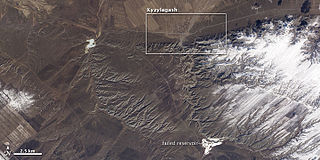 W
WThe Kyzyl-Agash Dam failure occurred in a dam located outside the village of Kyzyl-Agash, Almaty Province, Kazakhstan. On 11 March 2010, the dam burst, flooding the village. At least 43 people were killed, 211 people were injured, and over 1000 evacuated from the village.
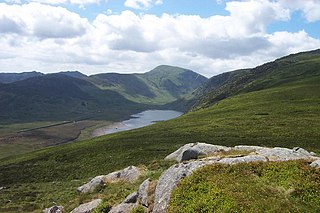 W
WLlyn Eigiau is a lake on the edge of the Carneddau range of mountains in Snowdonia, Conwy, Wales. The name Eigiau is thought to refer to the shoals of fish which once lived here. Early maps refer to it as Llynyga. It is thought that a small number of Arctic char exist in the lake after they were transferred here from Llyn Peris, and certainly it is one of the few lakes in Wales to have its own natural brown trout.
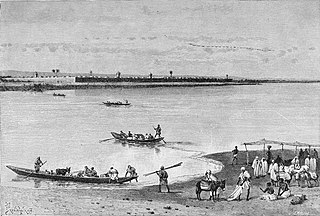 W
WThe Logon or Logone River is a major tributary of the Chari River. The Logone's sources are located in the western Central African Republic, northern Cameroon, and southern Chad. It has two major tributaries. The Pendé River in the prefecture Ouham-Pendé in the Central African Republic and the Mbéré River at the east of Cameroon. Many swamps and wetlands surround the river.
 W
WThe Malpasset Dam was an arch dam on the Reyran River, located approximately 7 kilometres north of Fréjus on the French Riviera, Southern France, in the Var department. It collapsed on 2 December 1959, killing 423 people in the resulting flood. The damage amounted to an equivalent total of US$68 million. The event also ushered in the practise of posthumous marriage in France for civilians as many women who lost their fiances were granted the right to marry them after death.
 W
WThe Marib Dam is a modern dam blocking the Wadi Adhanah in the valley of Dhana in the Balaq Hills, located in the Ma'rib Governorate in Yemen. The current dam was built in the 1980s and is close to the ruins of the ancient Great Dam of Ma'rib, first built in the 8th century BC. It was one of the engineering wonders of the ancient world and a central part of the Sabaean and Himyarite kingdoms around Ma'rib.
 W
WThe Möhne Reservoir, or Moehne Reservoir, is an artificial lake in North Rhine-Westphalia, some 45 km east of Dortmund, Germany. The lake is formed by the damming of two rivers, Möhne and Heve, and with its four basins stores as much as 135 million cubic metres of water.
 W
WLake Peruća or Peruča is the second largest artificial lake in Croatia, after Lake Dubrava. It is located in the Split-Dalmatia County.
 W
WOn 17 August 2009, a turbine of the Sayano-Shushenskaya hydroelectric power station near Sayanogorsk in Russia failed catastrophically, flooding the building and killing 75 people. A section of the roof of the turbine hall collapsed; all but one of the ten turbines were damaged or destroyed. The entire plant output, totaling 6,400 MW – a significant portion of the supply to the local area – was lost, leading to widespread power outages. An official report on the accident was issued in October 2009.
 W
WSempor Dam is an embankment dam on the Sempor River in District Gombong, Kebumen, Central Java Province, Republic of Indonesia. In addition to being a tourist attraction Sempor Dam is a source of irrigation water for farmers. It helps irrigate thousands of paddy fields in the delta. It also provides for flood control and has a 1 MW hydroelectric power station at its base. Construction on the dam started in 1967 but in the same year water from flash floods over-topped it, causing the dam to fail on November 29, 1967. The wave of water killed 160 people in three towns, including Magelang. and delivered widespread damage to the area. Construction later restarted on the dam and it was completed in 1978. Its power station was later commissioned in 1980.
 W
WShihgang Dam is a concrete gravity barrage dam across the Dajia River in Shigang District and Dongshi District of Taichung, Taiwan, located near Fengyuan District. The dam was built from 1974 to 1977 for flood control and irrigation purposes, and stands 35.2 m (115 ft) high and 357 m (1,171 ft) long, holding a reservoir with an original capacity of 3,380,000 m3 (2,740 acre⋅ft).
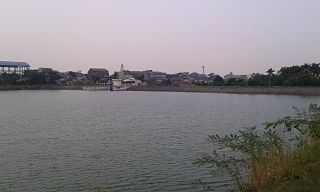 W
WSitu Gintung is an artificial lake near to the town of Cirendeu in the city of South Tangerang, Indonesia. It was formed by a dam up to 16 metres (52 ft) high which was built by Dutch colonial authorities in 1933. The dam failed on 27 March 2009, draining the lake, with resulting floods killing at least 100 people.
 W
WThe Subiaco Dams were a group of three Roman gravity dams at Subiaco, Lazio, Italy, devised as pleasure lakes for emperor Nero. The biggest one was the highest dam in the Roman Empire, and even in the world until its accidental destruction in 1305.
 W
WThe Tangiwai disaster occurred at 10:21 p.m. on 24 December 1953 when the Whangaehu River bridge collapsed beneath Wellington-to-Auckland express passenger train No. 626 at Tangiwai, in the central North Island of New Zealand. The locomotive and first six carriages derailed into the river, killing 151 people. The subsequent Board of Inquiry found that the accident was caused by the collapse of the tephra dam holding back nearby Mount Ruapehu's crater lake, creating a large lahar in the Whangaehu River, which destroyed one of the bridge piers at Tangiwai only minutes before the train reached the bridge. The disaster remains New Zealand's worst rail accident.
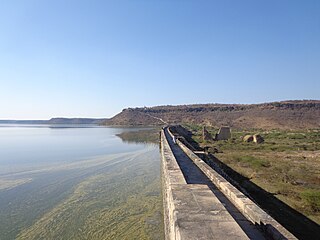 W
WTigra Dam creates a freshwater reservoir on the Sank River, about 23 km from Gwalior, Madhya Pradesh, India It plays a crucial role in supplying water to the city. It is beautiful and is an important tourism spot of Gwalior.
 W
WThe Tokwe Mukorsi Dam is a concrete-face rock-fill dam on the Tokwe River, just downstream of its confluence with the Mukorsi River, about 72 kilometres (45 mi) south of Masvingo in Masvingo Province, Zimbabwe. It is 90.3 metres (296 ft) tall and creates a 1,750,000,000 m3 (1,420,000 acre⋅ft) reservoir, the largest inland dam in the country. The associated hydroelectric power station has a 12 megawatts (16,000 hp) installed capacity.
 W
WThe Vajont Dam is a disused dam in northern Italy. It is one of the tallest dams in the world, with a height of 262 m . It is situated in the valley of the Vajont River under Monte Toc, in the municipality of Erto e Casso, 100 kilometres north of Venice.
 W
WVilla Epecuén was a tourist village in Buenos Aires Province, Argentina, on the eastern shore of Laguna Epecuén, about 7 kilometres (4.3 mi) north of the city of Carhué. Developed in the early 1920s, Epecuén was accessible from Buenos Aires by train. The Sarmiento Railway line served Villa Epecuén station, while the Midland Railway and the Buenos Aires Great Southern Railway carried passengers to nearby Carhué station. Tourism was developed by an Englishman after taking the land on lease. He marketed the lake as having healing properties, hiring Italian scientists to bolster the claim. At its height, Villa Epecuén could accommodate at least 5,000 visitors.
 W
WThe Virgen Dam is an embankment dam on the Viejo River near the town of El Hato de La Virgen in Matagalpa Department, Nicaragua. The primary purpose of the dam is hydroelectric power generation and it supports the 50 MW (67,000 hp) run-of-the-river Carlos Fonesca Plant. The dam and power station were completed in 1972. Water from the dam is diverted along the left bank of the river through a 2.7-kilometre (1.7 mi) long channel before being piped underground over 4.8 km (3.0 mi) to the power plant near Santa Barbara on the Viejo River. The plant contains two 25 megawatts (34,000 hp) Francis turbine-generators. The difference in elevation between the dam and power station affords a hydraulic head of 187 metres (614 ft). In 1998 heavy rains and flooding from Hurricane Mitch severely damaged the Mancotal and El Dorado Dams, over-topping their spillways and nearly destroying the dams. The Virgen Dam was destroyed but later rebuilt.
 W
WThe Wadi Qattara Dam, also referred to as Gattara or Al-Qattarah, is a clay-fill embankment dam located on Wadi Al-Qattara, 33 km (21 mi) east of Benghazi in Libya. Together with a secondary dam located 10 km (6 mi) downstream at 31°59′43″N 20°20′04″E and seven drop structures, the scheme was constructed after floods damaged the Benghazi area in 1938 and 1954. They were also constructed for irrigation water supply. Construction of the dams began in 1968 and was completed in 1971. However, a flood in 1979 severely damaged the main dam and destroyed the secondary dam downstream. The main dam was rehabilitated and the secondary dam was replaced with a rock-fill dam between 2000 and 2004 at a cost of US$30 million. The main dam was heightened 7 m (23 ft) and its total discharge capacity was increased to 240 m3/s (8,476 cu ft/s). Both dams were designed by Coyne et Bellier.
 W
WYawata Steel Works dam collapse occurred on May 1, 1916 in Yahata, Fukuoka when the Great Dam collapsed killing hundreds and crushing thousands of homes.
 W
WThe Zeyzoun Dam is a failed embankment dam near Zayzun, Hama Governorate, Syria. It impounded water pumped from the nearby Orontes River. The dam was completed in 1996 and its primary purpose was the irrigation of about 14,000 ha. The dam's reservoir was filled in the winter and expended its water during the summer.